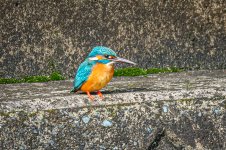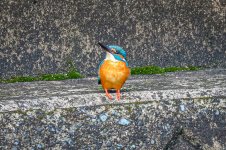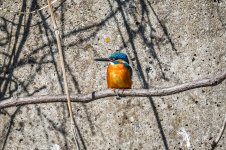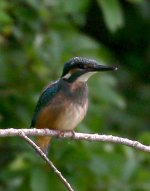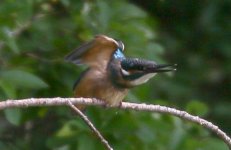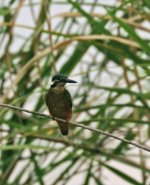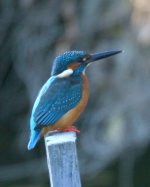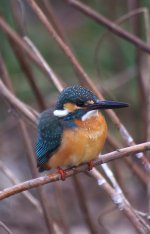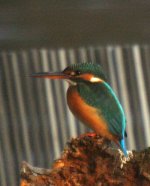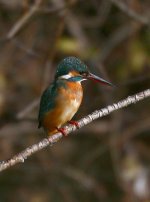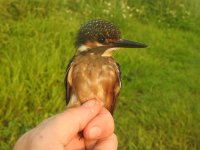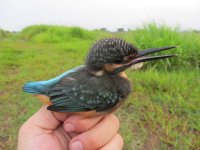Hi. I'm new here.
I found something seemingly unusual. I think I can readily ID this bird as an Indian Small Blue Kingfisher, Alcedo atthis bengalensis (Common Kingfisher).
Females can be distinguished readily by their lower mandibles being extensively orange except for the tip. However, here is a bird where there is just a touch of orange there. Anyone seen something like this? Perhaps it's young or something? Are there any instances of males having some orange there?
I found something seemingly unusual. I think I can readily ID this bird as an Indian Small Blue Kingfisher, Alcedo atthis bengalensis (Common Kingfisher).
Females can be distinguished readily by their lower mandibles being extensively orange except for the tip. However, here is a bird where there is just a touch of orange there. Anyone seen something like this? Perhaps it's young or something? Are there any instances of males having some orange there?





